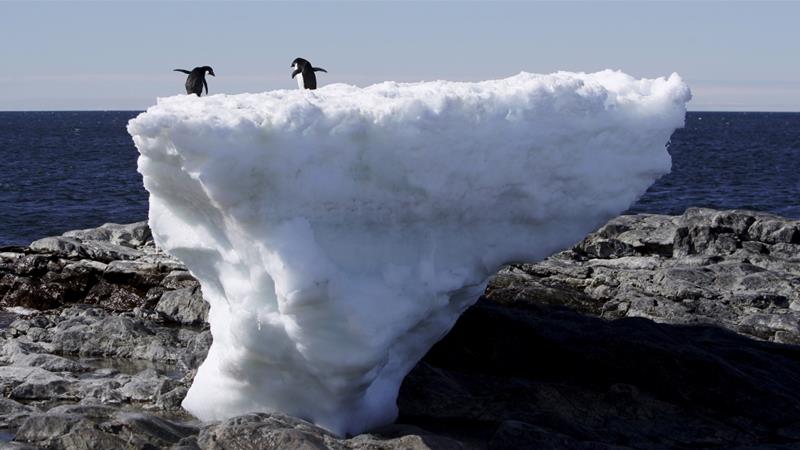Greenland’s ice is melting at an alarming rate, causing sea levels to rise. That increases the risk of flooding and threatens every coastal city around the globe.
The heatwave, that baked the entire continent of Europe is now exacerbating the conditions in Greenland, causing the surface of the island’s vast ice-covered region to melt at a record pace, resulting in threats of abnormal glacier melt and rising sea-levels.
Relevant: Europe Heat Wave as shown by Satellite, an alarming moment for Human Beings
On August 1, the Greenland Ice Sheet experienced its biggest single-day of ice loss in recorded history, as 12.5 billion tons of ice melted and poured into the Atlantic Ocean, according to satellite data.
One day earlier, over 10 billion tons of ice melted.
Every 1 billion tons of ice melt creates enough water to fill 400,000 Olympic swimming pools, the Danish Meteorological Institute noted late last week. The center offered a comparison to help people try to understand just how much ice melted.
Martin Stendl, a Danish scientist claimed a different comparison that the total ice that melted in Greenland on July 31 and August 1 could cover whole Germany with seven centimeters of water.
The Greenland Ice Sheet covers 80 percent of the island. It has developed over the course of thousands of years from the snow that has continuously condensed itself into ice. It serves as the world’s second-largest part of the ice, after the Antarctican glaciers.
The ice sheet has lost about 248 billion tons so far this year, according to the polar scientist Marco Tedesco.
On Monday, scientists confirmed that July 2019 was the hottest month in Earth’s recorded history. It beat the record set in July 2016, when the planet was experiencing a strong El Nino effect.
El Nino is a climate pattern that takes place when sea surface temperatures in the tropical Ocean rise to above-normal levels for an extended period of time, due to the flow of unusually warm water along the coast that causes many changes in weather in other places.
These abnormal warming trends and other climatic anomalies due to human-driven changes, as our intelligent species drastically increased atmospheric concentrations of carbon dioxide.


























Leave a Reply